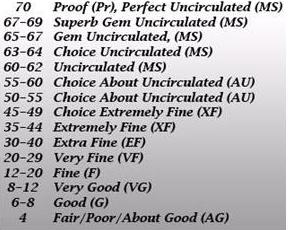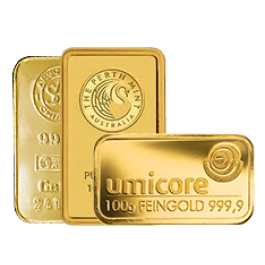Coin Grading explained!
Coin grading has evolved over the years to a system of finer and finer grade distinctions. Originally, there were only two grades, new and used.
This evolved for a time to the letter grading system beginning with the lowest grade – Basal State (also Poor (PO)), then continuing Fair (Fr), About or Almost Good (AG), Good(G), Very Good (VG), Fine (F), Very Fine (VF), Extremely Fine (EF), Almost or About Uncirculated (AU), Uncirculated (Unc) and up to Brilliant Uncirculated (BU). Gem Uncirculated was roughly equivalent in usage to BU at that time.
The British grading system is similar, except that 'Good' and 'Very Good' are 'Poor' and 'Fair' respectively. The word 'Good' used to describe a coin under the British grading system is usually an indication that it is at the higher end of its grading classification, e.g. a 'Good Fine' coin will be in a better condition than a coin that is merely 'Fine'.
William H. Sheldon in his book Penny Whimsy is credited with coming up with the Sheldon Scale in the 1950s, a numeric system going from 1-70. It was intended to be a reflection of the relative value of a 1794 Large Cent, which was then worth $1 in Basal State and $70 in Uncirculated MS-70.
This numerical system was used primarily within the community of large copper coin collectors (a very specialized part of numismatics that often has its own ideas about quality and grading compared to the rest of the coin collecting community) until the mid-1980s.
Now it is widely known that the numbers are a scale: 70 being a perfect coin, and 1 appearing as little more than a piece of heavily worn oxidized, scarred, and bent metal.
Sheldon grading system.
As the collector market for coins grew rapidly in the late 19th century and early 20th century, it became apparent that a more precise grading standard was needed. Some coins were simply more fine than others, and some uncirculated coins showed more luster and far fewer marks than others. Terms like "gem uncirculated" and "very fine" began to see use, as more precise grading descriptions allowed for more precise pricing for the booming collector market. In 1948, a well-known numismatist by the name of Dr. William Herbert Sheldon attempted to standardize coin grading by proposing what is now known as the Sheldon Scale.
In 1984, Numismatic Certification Institute (NCI), the first privately owned grading service, was launched by the owners of Heritage Rare Coin Galleries of Dallas, Texas. In 1985, Ivy Press published the NCI Grading Guide, later renamed How to Grade U.S. Coins, an instruction manual on grading mint state and proof U.S. coins by James L. Halperin. In 1986, PCGS (Professional Coin Grading Service) was incorporated. PCGS authenticated, graded and encapsulated coins in a protective hard plastic shell. They used a combination of the two older systems putting letters and numbers together so that the grades became, MS-61 to MS-70 (Mint State: perfect, the highest level on the Sheldon Scale). For mint state and proof coins, PCGS used a slightly stricter interpretation than NCI, but basically employed the same standards outlined in Halperin's book. They also issued limited guarantees for the value of coins they had graded.
Sheldon Grading System

The origin of the idea to make coins easily tradable on an open market came from Wall Street in order to expand beyond the bullion coin market. However, because they had finite mintages, and used technical grading rather than market grading there are physical and practical limits to their system, particularly in relating the grade directly to a value. One thing PCGS did accomplish was largely ridding the marketplace of inferior counterfeit coins.
Rarity factor
The value of coins depends on their rarity. There are several scales which have been developed for the definition of the rarity of a particular coin. The most common are the "Sheldon rarity scale" and the "Universal rarity scale.
As of 2013, there are two prevalent coin grading services in the United States: Professional Coin grading Service (PCGS) and Numismatic Guaranty Corporation (NGC). ANACS is considered the third leading service, and is also quite credible. There are subtle variations in the grades assigned by each of these major services due to the grading philosophy used, and prospective buyers are encouraged to seek professional or expert advice before making any important rare coin purchases.













